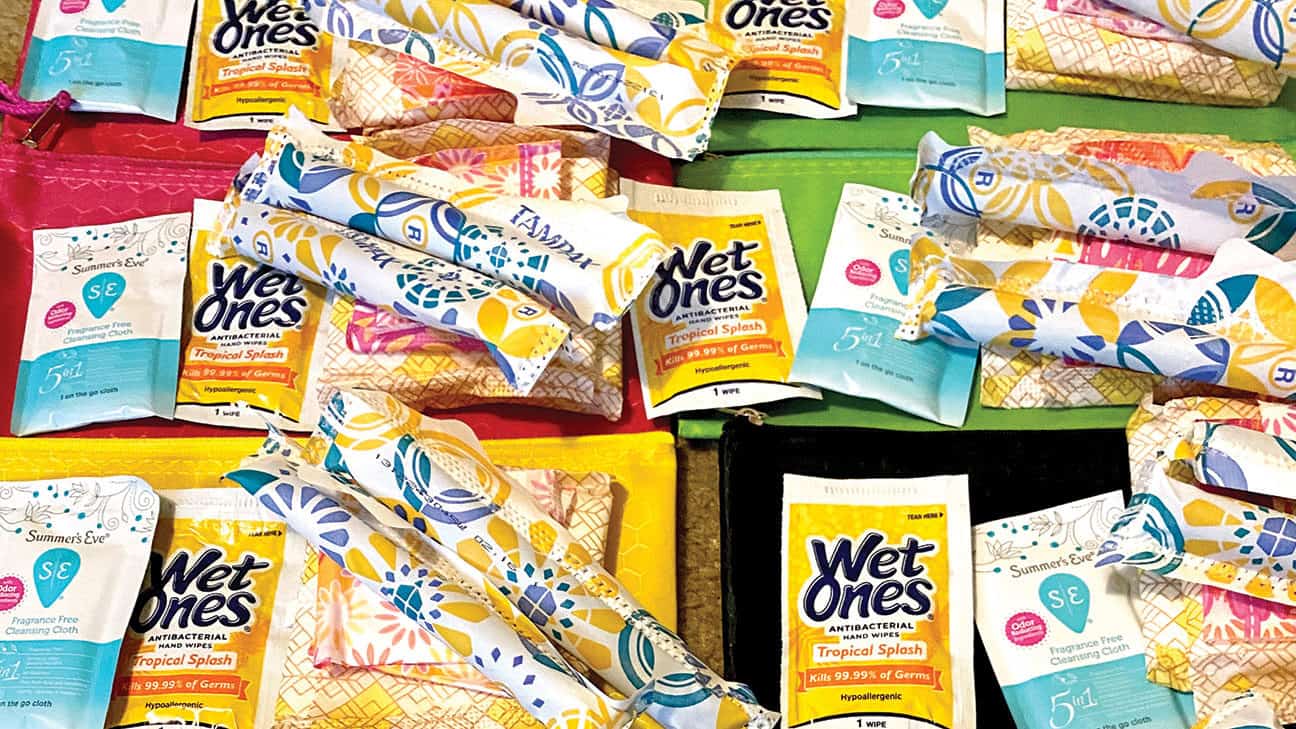
Period packs getting ready for assembly. Each pack will come in its own discrete bag that will be given to those requesting one.
Choctaw Period Project to help young women
Published January 1, 2022By Chris Jennings
If Monica Brooks has her way, girls in the Choctaw Nation, regardless of tribal affiliation, will have one less thing to worry about while they’re at school. Brooks has started the Choctaw Period Project (not associated with the Choctaw Nation) to gather donations of personal hygiene products for young women.
Once Brooks has enough product on hand to create individual kits, she plans to distribute them to any schools within the boundaries of the Choctaw Nation that would like them.
“That way, any young lady that has a need while they’re at school, and they don’t have those products on hand, they can get one for free,’ said Brooks.
The Choctaw Period Project (CPP) idea stems from Brook’s belief that if you take something, you need to give back. She had recently gone through some medical issues and was cared for by Choctaw Nation medical staff. Earlier in the year, she had received CARES Act money at a time when she needed it.
Brooks knew that it would be her time to give back when things calmed down. “Two days after my medical procedure and receiving positive news from that, I started CPP to keep that promise,” said Brooks.
She does not take any cash donations; instead, products can be purchased from an Amazon wish list and sent to her through Amazon. Items available to buy range from tampons and pads to sanitary wipes and even some comfort items like small bags of candy and tissues.
“Those little things like a piece of candy, Chapstick or some tissues, if you know, you’re just having a bad day those little things can make a difference,” said Brooks.
Brooks says you don’t need to spend a lot of money to be part of the project. There are several items on the list under $2.00 and anything helps. You can also subscribe to certain items through Amazon that will then ship to Brooks at regular intervals to be added to kits.
Most young girls get their first period at about 12 years old. However, anytime between 10 and 15 is within the average range. This significant milestone in a girl’s life marks her transition from girlhood to womanhood. It can also be stressful for many reasons.
Brooks herself has stood in the shoes of the young women she’s trying to help. “When I was a kid in grade school, I had some embarrassing little situations, and I didn’t have products…I remember it and how it affected me emotionally. I was already going through enough as it was, and then to not have the things that are needed,” said Brooks.
Brooks aims to start at smaller, rural schools to get things going but hopes to expand beyond that if possible.
“It is really about showing the Chahta Spirit, keeping that promise and showing my daughter and grandchildren that it is nice to have ‘things’ but it is important to give back. We never know what one simple act of kindness can do to change someone’s life,” said Brooks.
Check out Choctaw Period Project on Facebook for more information.